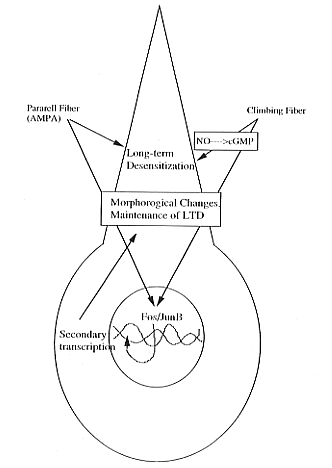National Insitute for Basic Biology

National Insitute for Basic Biology


|
| Fig. 1. Evolution of the IL-6 receptor family in the immune and nervous system (a Model). Modified from the figure 4 of Yamamori and Sarai (1994) including recent results from Hilton et al. (EMBO J., 13, 4765-4775, 1994.) |

|
| fig.2. Gene Expression and Long-term Memory (a Model) |